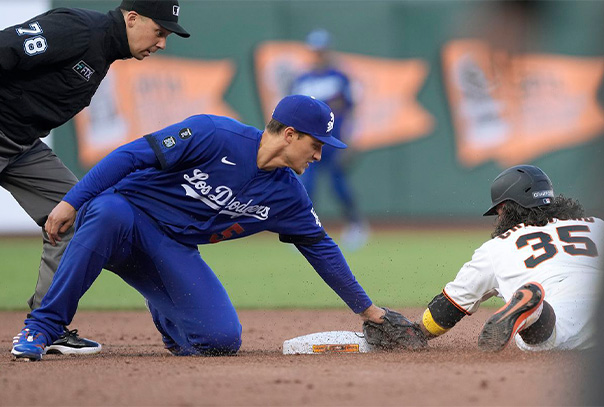
As we entered into the final weekend of the 2021 Major League Baseball regular season, the game’s best two records were found in the National League West. Both the Giants and the Dodgers had already won over 100 games, and had either been in another division, they would probably have been spending those last few days setting up their pitching and resting their hitters to be at their strongest in anticipation of a deep October run. But thanks to how baseball’s postseason is set up, neither team was afforded that luxury. One of the two would find themselves playing in the one shot, winner advance, loser go home, Wild Card Game. Anything can happen in just one game, so the stakes of winning the division were absolutely huge versus the risk in playing in a single elimination game after such an incredible year. For both the Giants and the Dodgers, it was every bit a sprint to the finish.
There was a microscope not just in the National League West, but also on all of the other tight races in that final week of the season. Everything seemed to be heightened. Each game seemed just that more important; each run scored or stranded that much more vital to a club’s postseason chances. But the reality is that it was an entire body of work that got us to that very point. In the marathon that is a 162-game season, no one game counts any more than another. A win in April has the same exact value as a win in August. Within each game, the same theory holds true: despite the spotlight that shines in the final couple innings, a run in the first counts exactly the same as a run in the ninth. It’s the compilation of every inning that makes up the final score in the end.
Had either the Giants or Dodgers pulled out a win here or a win there earlier in the season, maybe they would have been breathing just a bit easier that last week. If the Red Sox or the Yankees took better advantage of some great scoring opportunities in a game or two back in the spring that they wound up losing, perhaps they would have been sitting a bit prettier than they were in those first couple days of October.
The truth of the matter is that teams never know which run will be the game winner, nor will they know which win will be the difference in their postseason fate. We figure both out after the fact. Because we don’t know in the heat of battle or in the middle of the marathon, it cannot be understated for teams to truly understand the importance of every single run and every single win while in the moment.
“Get ‘em next time.”
“There’s always tomorrow.”
“We still have three at bats to go.”
“There’s a lot of game left.”
Become a fly on the wall in any baseball dugout throughout the spring and summer, and you’re guaranteed to hear one if not all of those phrases. They are all often uttered as a positive and upbeat reaction to missed opportunity. In this game with so much failure, that type of encouragement is not only invaluable but necessary over the course of a game and a season. But it is every bit a coachable mindset to breed amongst your teams and players a sense of urgency to get ‘em this time; or to not wait for tomorrow and figure it out today; or to take advantage of the first at bat to put runs up and to not wait for the last. When the collective attitude of a team is built from the foundation of understanding that the value of a run and the value of a win are the same no matter when they take place, that’s a team ready to take advantage of every opportunity, no matter when in the game or the season they are presented.